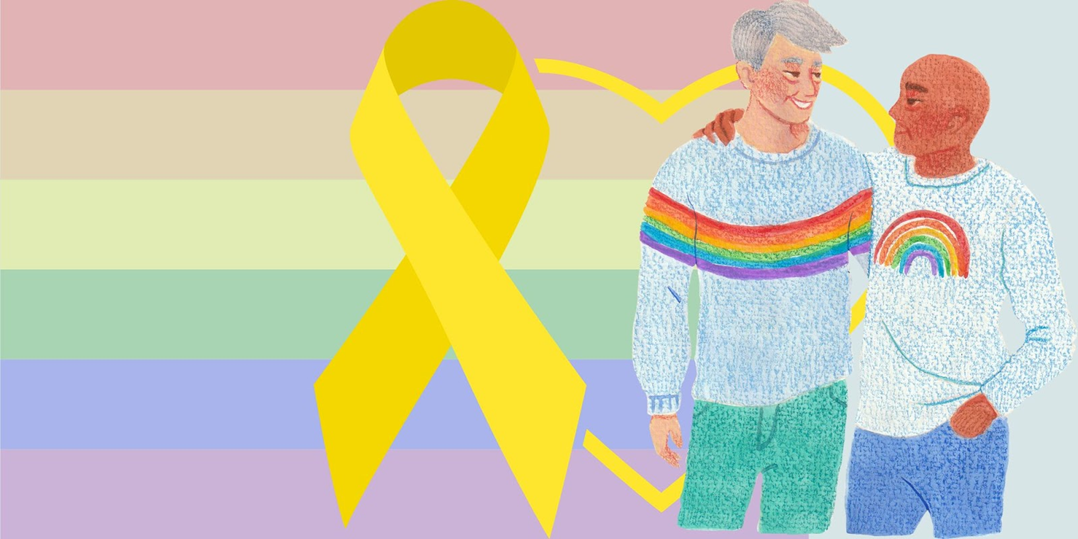
Understanding and Preventing Suicides Among LGBTQIA+ Individuals

Suicide is a tragic and complex issue that affects individuals across all demographics, but research consistently shows that LGBTQIA+ (Lesbian, Gay, Bisexual, Transgender, Queer/Questioning) individuals are at a significantly higher risk compared to the general population. This blog aims to explore the reasons behind this heightened risk, identify key risk factors, discuss strategies for prevention, and highlight the unique mental health challenges faced by LGBTQ individuals.
Reasons for Suicide in LGBTQ Individuals
The reasons behind suicide among LGBTQ individuals are multifaceted and often interconnected with societal, interpersonal, and personal factors:
- Discrimination and Stigma:
- Family Rejection:
- Internal Homophobia and Transphobia:
- Bullying and Harassment:
- Lack of Legal Protections:
LGBTQ individuals frequently face discrimination, prejudice, and stigma in various aspects of their lives, including at home, school, work, and in religious or social settings. This constant exposure to negativity and rejection can lead to feelings of hopelessness and isolation.
Family acceptance plays a crucial role in the mental health and well-being of LGBTQ individuals. Rejection by family members due to sexual orientation or gender identity can significantly increase the risk of depression, anxiety, and suicidal thoughts.
Internalized feelings of shame or guilt about one's sexual orientation or gender identity, often learned from societal messages, can contribute to poor mental health outcomes and increase suicide risk.
LGBTQ youth are disproportionately affected by bullying and harassment, both in person and online. Persistent victimization can lead to feelings of despair and worthlessness.
In many places, LGBTQ individuals face legal discrimination, such as limited protections in employment, housing, and healthcare. This systemic inequality can contribute to a sense of marginalization and hopelessness.
Risk Factors for Suicides among LGBTQIA+
Several risk factors contribute to the increased vulnerability of LGBTQ individuals to suicidal ideation and behaviors:
- Mental Health Disorders:
- Isolation and Lack of Support:
- Access to Healthcare:
- Substance abuse:
LGBTQ individuals are more likely to experience mental health disorders such as depression, anxiety, and substance abuse, which are significant risk factors for suicide.
Social support is crucial for mental health. LGBTQ individuals who lack supportive networks or feel isolated are at higher risk.
Barriers to accessing affirming and competent healthcare services can prevent LGBTQ individuals from receiving adequate mental health care and support.r
Alcohol, and other drug abuse among LGBTQ pose a serious threat to their lives and increase suicide risk 3 times.
Mental Health in the LGBTQ Community
Understanding the unique mental health challenges faced by LGBTQ individuals is essential for effective prevention and support-
- Higher Rates of Mental Health Issues:
- Barriers to Care:
- Minority Stress:
LGBTQ individuals experience higher rates of depression, anxiety, PTSD, and substance abuse compared to their heterosexual and cisgender counterparts.
LGBTQ individuals often encounter barriers to accessing healthcare services that are competent and inclusive of their identities.
Minority stress theory explains how stigma, discrimination, and prejudice contribute to poorer mental health outcomes among LGBTQ individuals.
How to Prevent Suicides Among LGBTQIA+ Individuals
Preventing suicides among LGBTQIA+ individuals requires a multifaceted approach that addresses societal, interpersonal, and individual factors:
- Promote Acceptance and Inclusion:
- Increase Access to Mental Health Services:
- Provide Supportive Environments:
- Education and Awareness:
- Crisis Intervention and Hotlines:
Advocacy for LGBTQ rights, policies that protect LGBTQ individuals from discrimination, and fostering inclusive environments in schools, workplaces, and communities can promote acceptance and reduce stigma.
Ensure that mental health services are accessible, affordable, and LGBTQ-affirming. Train healthcare providers to be culturally competent and sensitive to the needs of LGBTQ individuals.
Create supportive spaces and networks for LGBTQ individuals to connect, share experiences, and access resources. Peer support groups and LGBTQ community centers play a crucial role in fostering resilience and reducing isolation.
Educate the public, including families, schools, and workplaces, about LGBTQ identities, issues, and mental health. Challenge stereotypes and myths that contribute to stigma.
Promote awareness of crisis hotlines and resources for individuals experiencing distress or suicidal thoughts.
Mental Health Services for LGBTQ in India
several organisations and mental health service providers offer counseling and support specifically tailored for LGBTQ individuals. These organizations and service providers are dedicated to offering LGBTQ-affirming counseling services in India, helping individuals navigate mental health challenges, discrimination, and societal stigma. They provide a vital resource for LGBTQ individuals seeking support in a safe and understanding environment.
- Mpowerminds:
- The Humsafar Trust:
- Umang LBT Helpline:
- Naz Foundation:
- Sweekar - The Rainbow Parents:
Mpowerminds is fully equipped with experienced counsellors and therapist who are specifically trained for LGBTQ support. Mpowerminds also have the 24X7 crisis management toll-free number.
Based in Mumbai, The Humsafar Trust offers counseling services for LGBTQ individuals. They provide a safe space for discussing issues related to sexual orientation, gender identity, relationships, and mental health. Their counselors are trained to address the specific needs and challenges faced by LGBTQ individuals.
Umang, located in Mumbai, focuses on lesbian, bisexual, and transgender individuals (LBT). They provide counseling services that are sensitive to the experiences and identities within the LBT community. Their counselors offer support for mental health concerns and facilitate peer support groups.
Naz advocates for diversity and inclusion and a greater understanding of sexuality and empowers members of the community to access their rights
Sweekar offers counseling services for parents and families of LGBTQ individuals, aiming to promote acceptance and understanding within families. They play a crucial role in supporting the mental health and well-being of LGBTQ individuals through family counseling and education.
Conclusion
Suicide among LGBTQ individuals is a complex issue with deep-rooted societal and personal implications. By addressing the reasons behind suicide, identifying risk factors, promoting mental health awareness, and advocating for inclusive and supportive environments, we can work towards reducing the rates of suicide in the LGBTQ community. It is crucial to continue the conversation, support initiatives that prioritize LGBTQIA+ mental health, and empower individuals to seek help and support when needed.
image credit : freepik

How Psychotherapy Helps in Late-Life Depression And Anxiety: A Path to Healing, Hope, And Healthy Aging
How Social Isolation Impacts Geriatric Mental Health? How to Reverse It?

